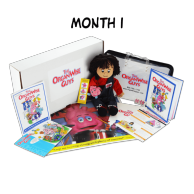 Today, we are talking edible gardening, as we kick off a gardening series by Dr. Mary Ball, PhD, who after a 40-year career as a college biology professor, became a Tennessee Master Gardener and enjoys gardening with kids. Dr. Ball has helped secure funding for gardening, nutrition education, and hundreds of dollars worth of donated seeds to schools and afterschool programs in rural East Tennessee.
Today, we are talking edible gardening, as we kick off a gardening series by Dr. Mary Ball, PhD, who after a 40-year career as a college biology professor, became a Tennessee Master Gardener and enjoys gardening with kids. Dr. Ball has helped secure funding for gardening, nutrition education, and hundreds of dollars worth of donated seeds to schools and afterschool programs in rural East Tennessee.
Folks who have never gardened before often think that Spring is the only time to plant a vegetable garden! And folks who have less-than-fond memories of hours spent in a hot kitchen “putting up” the fruits of back-breaking labor, have often given up on gardening the “old-fashioned way”.
The good news is that tasty produce of one sort or another can be grown virtually anytime of the year with minimal effort and with little garden space. Below are three gardening ideas that can be started just about any time of year, involve growing methods that can be applied to many other vegetables, and that promote using home-grown (or school-grown) veggies creatively in healthy recipes.
Grow an Herb Garden
Grow herbs in containers, either inside or outdoors, to use in seasoning your cooking or in fresh salads and dressings. You can easily start many of these from seeds, but take advantage of free cuttings and plant sales held by herb enthusiasts in your community! (See the Herb Society of America’s Facebook page for lots of interesting information.)
Start a Mesclun-Mix Garden
“Mesclun” means “mixture” in French, and the term was coined many years ago to refer to mixtures of greens that were often grown together to create a salad.
With a “raised bed” measuring 2′ X 2′ by 8 inches high and filled with 2 cubic feet of potting soil, a Mesclun Garden can be easily sown from seeds, creating your own mix or using one created by a seed company. Beginning as little as 3 weeks later, individual leaves or entire plantlets can be cut, with enough leaf tissue being left behind to continue growing, providing other “harvests” at 3-4-week intervals. This harvesting method is called “Cut and come again.”
Nowadays, the possible combinations of different leafy greens, the variety of “dressings,” and the additional salad ingredients to add are virtually endless! You can also purchase or create seed combinations to yield greens for “stir-fry” recipes. These are called “braising mixes” rather than “salad mixes.”
Grow an Under-Appreciated Cool-Season Veggie
Fresh spinach is nutritious and tasty. Spinach grows well in Spring or in the Fall, but under summer conditions of long, warm days, it devotes its energy to flowering rather than producing tender large leaves. This is called “bolting.”
Download a Spinach Lane booklet that guides preschoolers to experience the look, feel, smell, and taste of spinach leaves. You can start a Spinach Garden by directly planting seeds just about any time except in the heat of summer.
Check back next month, where we’ll talk about how to make sure that your timing will “work”.

